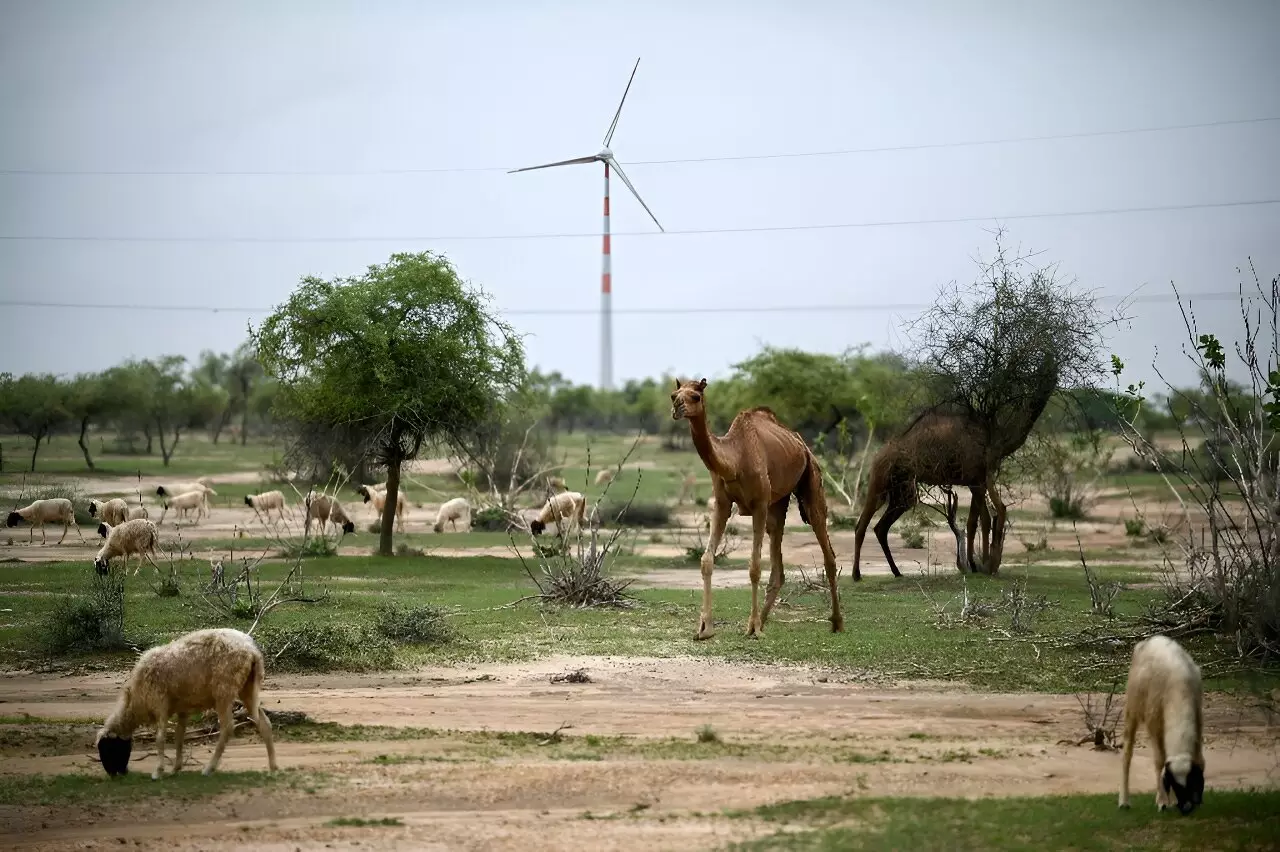The sight of whirring wind turbines in India’s Thar desert may symbolize progress and a shift towards green energy, but for the locals living in the shadows of these giant structures, it represents a significant sacrifice. While India is making strides to increase its non-fossil fuel capacity in response to the growing threats of climate change, the reality on the ground tells a different story. Residents like 65-year-old livestock herder Nena Ram are feeling the adverse effects of the wind turbines on their traditional way of life. The construction of these turbines has disrupted age-old farming systems and grazing lands, crucial for the livestock-based economy of the region.
India, as the third-largest greenhouse gas emitter, is facing the brunt of climate change with increasing heatwaves, floods, and droughts. However, the very communities that are bearing the impact of these extreme weather events are now also facing the repercussions of renewable energy production in their areas. The loss of grazing lands and damage to sacred groves in the Thar desert are creating a double-edged sword for farmers like Nena Ram. The construction trucks used in building wind farms are damaging critical water sources and drying out the land, further exacerbating the challenges faced by the herders.
In western Rajasthan state, where the Thar desert is located, the conflict between development and conservation is starkly evident. Large Indian conglomerates like the Adani Group and Suzlon own many of the wind turbines in the region. While these companies claim to be supporting India’s transition to renewable energy and investing in community development projects, local farmers argue that their needs have been sacrificed for the sake of progress. Grazing lands have been taken over by wind farms, and milk production has plummeted, leaving farmers struggling to make ends meet.
Despite the growth in renewable energy infrastructure, rural areas like Jaisalmer district continue to face power cuts and inadequate access to electricity. The power generated from wind turbines is often diverted to meet the demands of industrial centers and urban areas, leaving rural communities in darkness. Local environmental activists like Sumer Singh Bhati emphasize the desperation felt by residents who have access to electricity for only a few hours a day. The situation becomes dire during scorching summers when temperatures soar to 50 degrees Celsius, making it unbearable for the villagers.
While India aims to increase its non-fossil fuel power capacity to 500 GW by 2030 and achieve a net-zero-emissions economy by 2070, the rapid expansion of renewable energy plants is taking a toll on the environment. Wind farms in the Thar desert have disrupted the local biodiversity, endangering species like the Great Indian Bustard. Environmental activists highlight the impact of the installation of power lines and wind turbines on bird mortality rates, leading to a decline in the population of these revered species. Despite efforts to mitigate the impact, such as underground power lines in bird breeding zones, the push for renewable energy targets often takes precedence over conservation efforts.
The transition to renewable energy in India’s rural areas comes at a cost that is borne by the communities living in the vicinity of wind farms. While the push for green energy is essential to combat climate change, it is crucial to consider the social and environmental implications of renewable energy projects. Balancing the need for development with the preservation of local ecosystems and livelihoods remains a challenge that requires a nuanced approach and consideration for the voices of those directly impacted.


Leave a Reply
You must be logged in to post a comment.